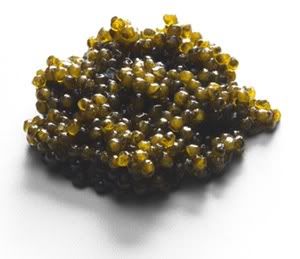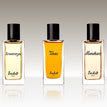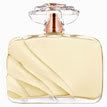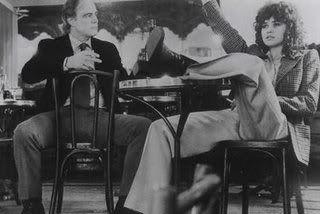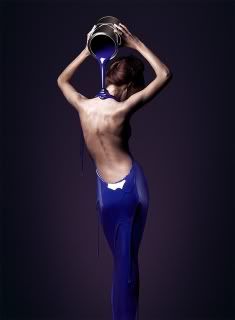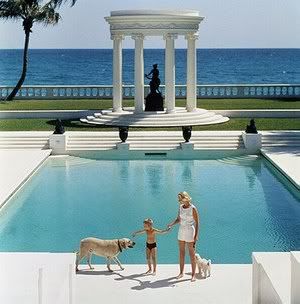
The above line from a well-known REM song unfortunately does not leave me feeling fine, like the song repeated time after time again in its refrain. Maybe it has to do with my abhorrence for state intervention of any kind in what I perceive as my consumer’s choice. Maybe it has to do with the prospect of endangered aromas, in the manner of endangered species that is looming in the horizon very shortly. Or maybe, just maybe, I am one of those who safe in their well-arranged existence likes to live precariously through the sensual pleasures that are given us, who knows for how much longer: a vivere pericolosamente mentality of eating medium-rare bovine steak, listening to alternative underground bordering on satanistic some would argue rock with covers that might bruise sensitive feministic sensibilities and -last but not least- using perfumes containing real oakmoss in amounts exceeding the prescribed percentage set by IFRA (the International Fragrance Association) and the EU (European Union).
In view of the whole debacle of oakmoss use as stated in a previous article, I was just about to resign myself to searching for vintage bottles of my favourite chypre perfumes such as Mitsouko, Femme, Bandit and Chanel#19. Not an easy task all the same, as perfume unlike wine does not come with a production year, despite the fact that we perfume-users use the oenological term vintage so often to convey a particularly good aged masterpiece. But it seems oakmoss were to be the least of our troubles.
As Anya McCoy, a talented natural perfumer whom I have interviewed in the past in this venue and the president of the Natural Perfumers Guild, brought to my attention, there is a whole list of ingredients that are about to be eradicated or strictly controlled in the formulae of perfumes produced from now on. The control of the percentage of certain natural ingredients to minute amounts in a given formula might bear no great value in the creation of a new perfume, as it could fuel the imagination of a given nose into composing new wilder arpeggios of unprecedented combinations. It would certainly signify however the destruction and bastardization of several revered masterpieces of the past, rendering them but ghosts of their former glorious shelves leaving a generation that has never smelled the originals with a skewed perception of what greatness really is all about in the olfactory kingdom.
The alphabetical catalogue of those nature-derived aromatics that are restricted follows:
Angelica root oil
Bergamot oil expressed
Bitter Orange Peel Oil Expressed
Cade oil
Cedar moss
Chenopodium oil
Citrus oils and other furocoumarins containing essential oils
Costus root oil, absolute and concrete
Cumin oil
Fig leaf absolute
Grapefruit oil expressed
Lavender
Lemon oil cold pressed
Lime oil expressed
Massoia bark oil
Massoia lactone
Melissa oil (genuine Melissa officinalis)
Oak moss extracts
Opoponax
Peru balsam
Petitgrain Mandarin Oil
Rose oil
Santolina oil
Savin oil
Styrax
Tagetes oil and absolute
Tea leaf absolute
Tree moss extracts
Verbena absolute
Verbena oil
Perusing the list one cannot but drop one’s jaw. Lavender? The quintessential essential oil that is recommended for pacifying even babies? Citrus, bergamot and bitter orange peel oils? Seriously, do they know that here in the Mediterranean we make a dessert out of the inedible bergamot fruit, using exactly the peel of the fruit boiled in syrup made with sugar? We eat the stuff for heaven’s sake. How much more harm could it do if we applied it on our skins? Yes, I am aware that those oils are photosensitizing. Surely a warning label on the box on not wearing it on exposed body parts could serve the purpose of protecting us amply? Not to mention rose oil (whose petals we also use in a dessert….the way I am going you must have formed the impression there’s precious few things we don’t make into desserts….well, it’s true, not counting the IFRA executives in those numbers….)
But the whole scenario would not bring doom futuristic Blade Runner echoes in our ears had it been chosen to just use warning labels on the boxes, stating exactly what the dangers are, so that the consumer can make an informed choice and suffer what consequences he/she has brought upon him/herself through that choice. Much like smoking…..
To cut a long story short, this whole dirty business smells more of money and lost revenues for the companies who produce aroma-chemicals and the law-firms that defend cases of demented “victims” of allegedly dangerous perfumes, than real flower and fruit oils.
It reminds me of the notorious case of an electronic goods company who lost a fortune to someone who was sick enough to microwave his cat and then plead his case in court successfully stating the instructions never warned about not putting an animal in the microwave appliance in the first place…I mean, geez…
If you want to make a difference and want to be vocal on the subject, there is a petition issued by Cropwatch, an independent watchdog for natural ingredients used in perfumery; you can vote against the 40th Amendment of IFRA that restricts those ingredients and make them come into discussion about this practice.
You can do it here
Pic of Tim Burton's "Corpse bride" comes from athinorama.
.jpg)
